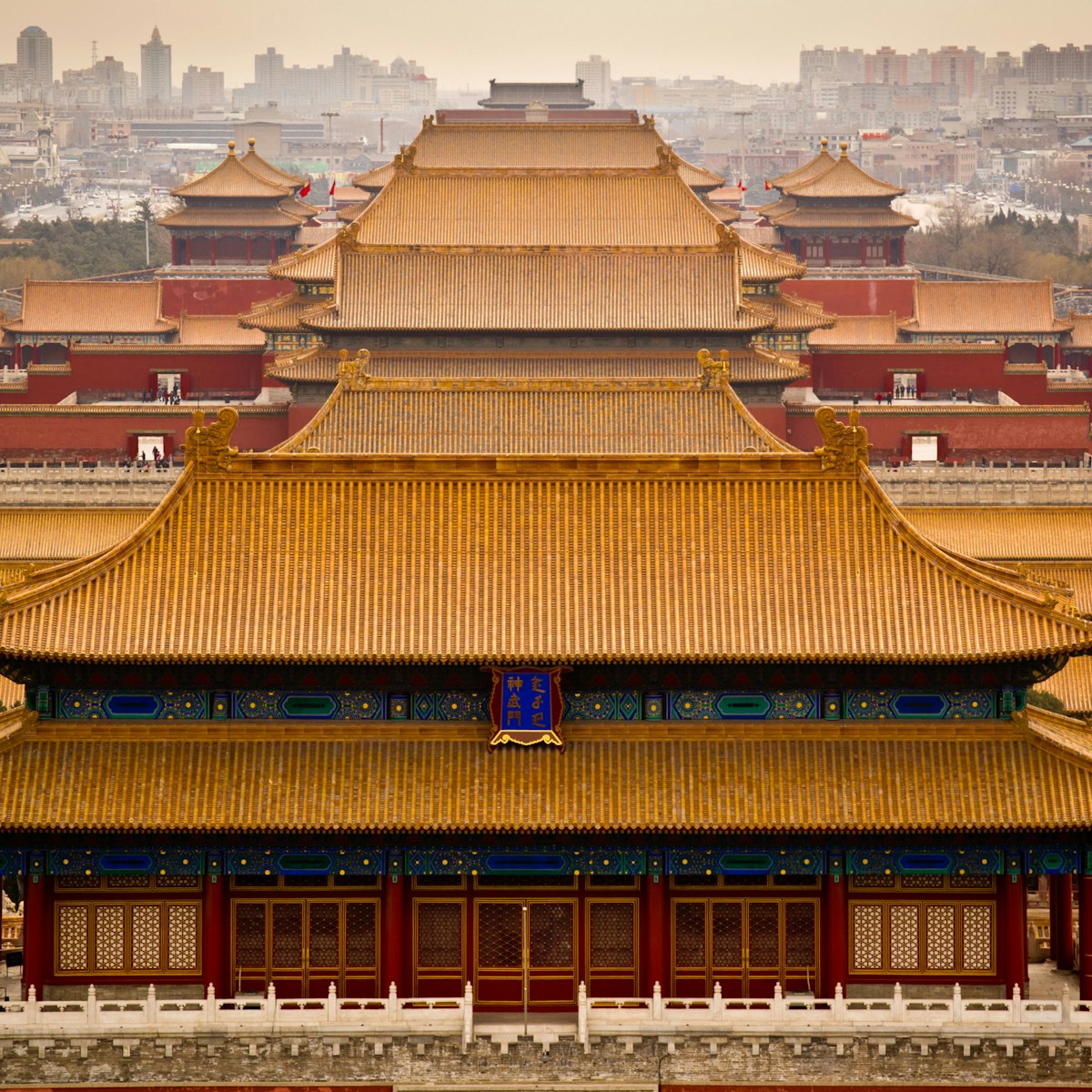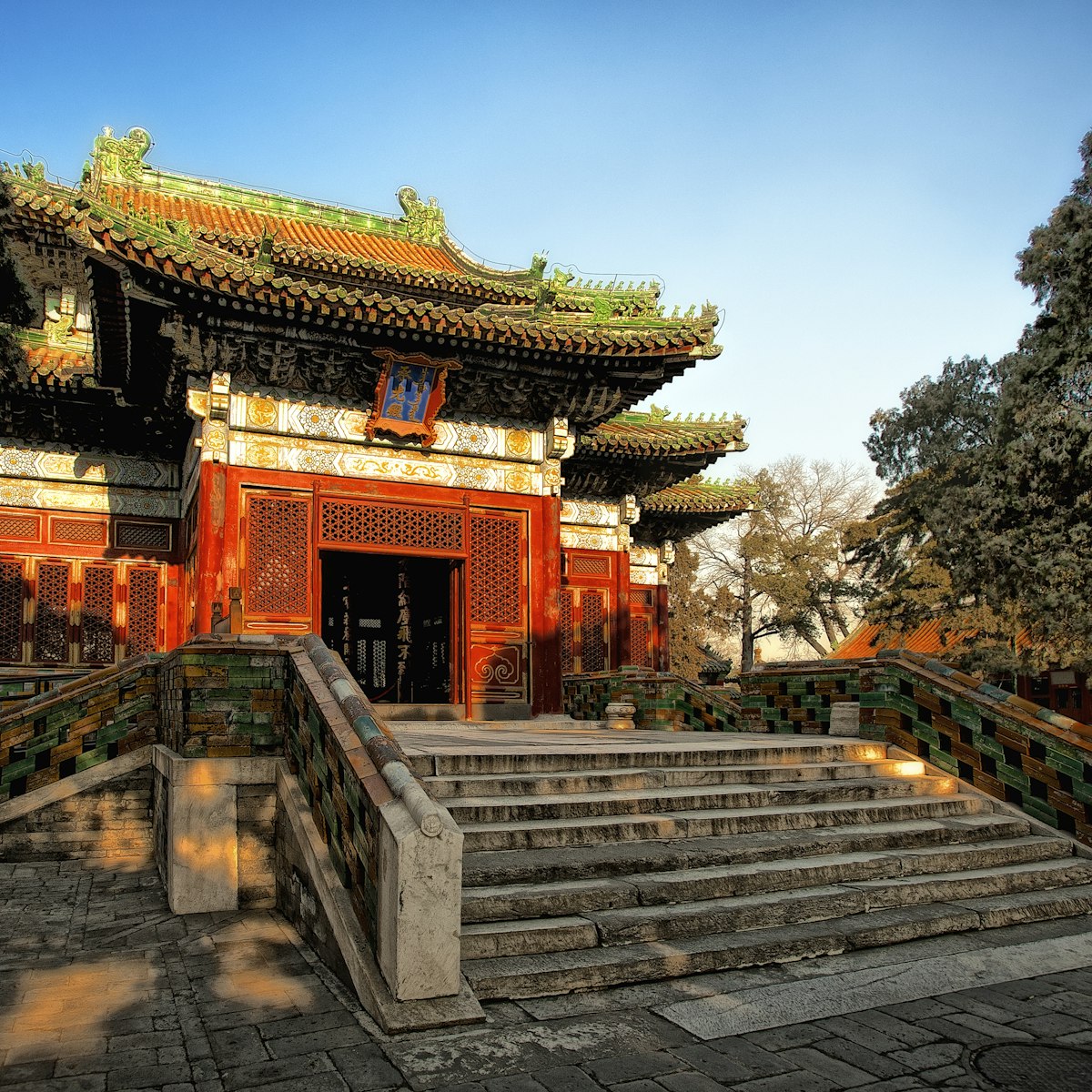One of Beijing's best-kept secrets – despite being next to the Gate of Heavenly Peace – the Workers' Cultural Palace was gifted to the masses by Mao in 1950 as a place of wholesome recreation. For several centuries prior, it was the most sacred temple in Beijing, where emperors would come to worship their ancestors. The cathedral-like Sacrificial Hall is as magnificent as any imperial building in Beijing.
Ancient cyprus and pine trees, one reputedly planted by a Ming emperor, line the approach to the Glazed Gate (琉璃门; Liúli Mén), said to be a Ming dynasty original, which would make it older than those in the mostly Qing-era Forbidden City next door.
Marble bridges lead to three flights of steps ascending to the mighty Sacrificial Hall (太庙; Tài Miào), its sign inscribed in Chinese and Manchu. Gods alone were permitted to traverse the central plinth; the emperor was consigned to the left-hand flight. This hall would have held the thrones of departed royals and their consorts; now it holds rotating calligraphy displays and the like. Enter to admire the epic scale of the interior and its astonishing carpentry.
The northern edge of the park abuts the palace moat, where you can find a bench and park yourself in front of a fine view. Exit through the northwest gate to enter the Forbidden City ticket area, neatly bypassing the tourist scrum entering via the Gate of Heavenly Peace.







